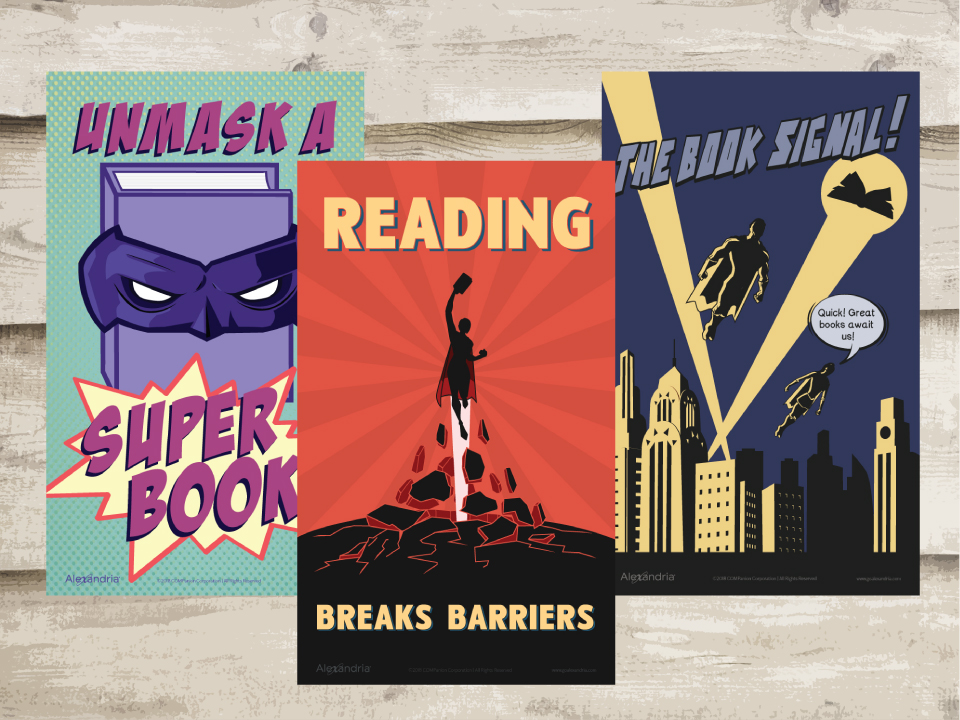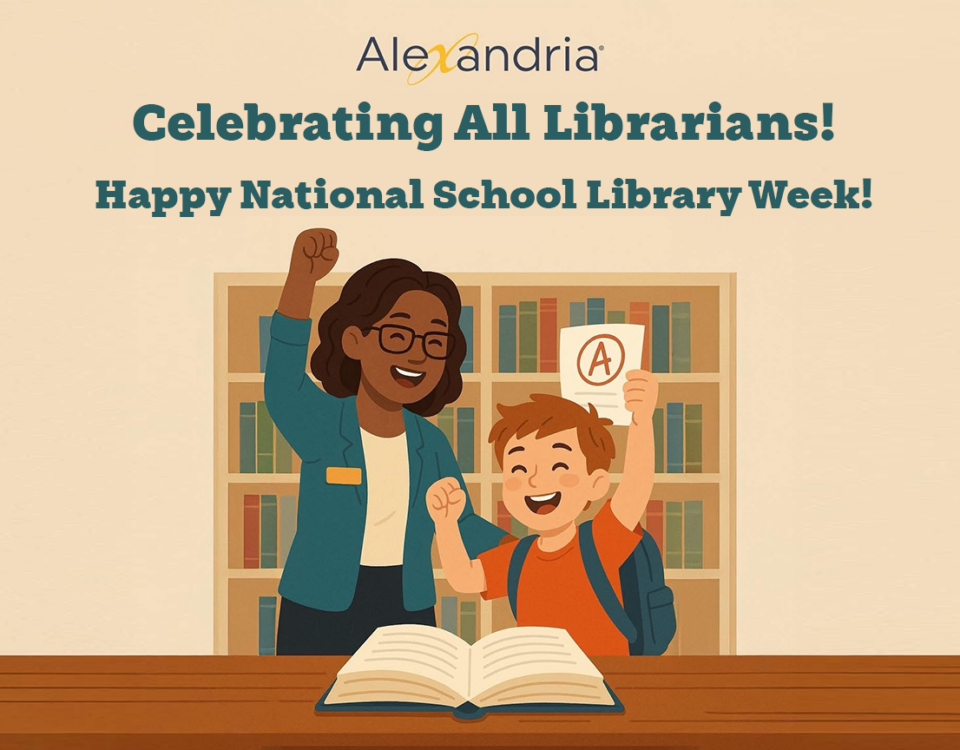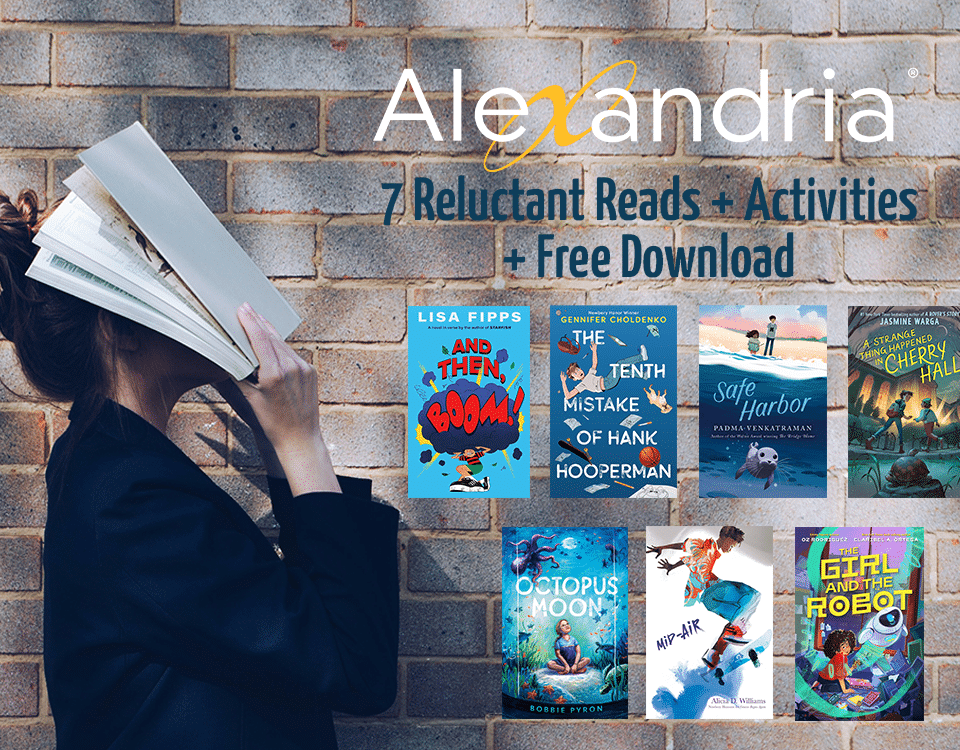
Can You Name the Classic Novel Based on the Opening Line? Quiz
August 10, 2018
September Reading Posters Are Here!
August 24, 20187 Ways to Increase Student Literacy at Your School Library

It’s World Literacy Day on September 8th! How are you celebrating at your library? How are you promoting literacy to your students? We’d love to know in the comments below.
The more kids read, the better readers they become. It’s as simple as 1 +1 = 2, right? But, honestly, it isn’t that easy sometimes. Librarians know the importance of reading every day. But, there are some startling statistics of the state of literacy in America that you may not know.
Stated on the Education Blog Room 241, more than 30 million adults in the United States are below a 3rd-grade reading, writing, and math skill levels. Of those Americans who are parents, their children have a 72 percent chance of being at low reading levels themselves. Literacy rates vary greatly based upon factors like racial and socio-economic background. But these aren’t the only startling statistics.
The more kids read, the better readers they become. It’s as simple as 1 +1 = 2, right? But, honestly, it isn’t that easy sometimes. Librarians know the importance of reading every day. But, there are some startling statistics of the state of literacy in America that you may not know.
Stated on the Education Blog Room 241, more than 30 million adults in the United States are below a 3rd-grade reading, writing, and math skill levels. Of those Americans who are parents, their children have a 72 percent chance of being at low reading levels themselves. Literacy rates vary greatly based upon factors like racial and socio-economic background. But these aren’t the only startling statistics.
Increasing Student Literacy at Your Library
Since literacy rates are a combination of external and internal factors, educators can have a hard time pinpointing the exact issue contributing to low literacy rates. But, good work and focusing on the right areas can help you and your school community combat the literacy crisis. Check out these 7 ways you can increase student literacy at your library.
1| An Extra 6 Minutes, An Extra 15 Minutes!
Did you know that this study by Renaissance found that students who read just an extra 6 minutes every day jumped from struggling readers to at or above benchmark? This drastic change happened in the course of one school year, or a total of 8 - 9 months.Furthermore, a study of more than 9.9 million students found that those students who read 15 minutes or more per day made rapid improvement in literacy skills. And those students who read for over a half-hour to an hour saw the greatest increase in literacy gains.
Make time at your library for students to pick up books and read. An extra 6 minutes can make all the difference. You can even create reading nooks to promote reading, check out these cute reading nooks here!
2| Sharing Stories
For younger library patrons, you can promote and increase literacy by encouraging students to tell stories. Oral storytelling provides a bridge to written stories.Check out this Alexandria Library Lesson with Roll a Fairytale Dice Game for storytelling. This is a great activity for young students and can be transitioned into a writing prompt for older patrons.
3| Provide a Wide Variety Book Selection
Make sure to select a variety of books in different subjects, genres, or topics to add to your collection. When students have access to interesting books and materials they are more likely to read for longer periods, leading to increased literacy levels.Check out our new school year reading list! We also included a bonus graphic novel for reluctant readers.
4| Support Classroom Libraries
Classes may only visit your library once per week. This gives students a pretty limited time per week to select books. Encouraging students to visit before and after class may be tough. You can bridge this gap by providing in-classroom libraries to teachers of each grade. You can circulate the books between each grade’s teachers, providing an opportunity for students to select more books and read throughout the week.5| BookTalk Activity
As avid readers ourselves, we like to read reviews on a book before we commit to reading it. Kids are the same way! Create this library activity to encourage kids to talk to one another about what books they are currently reading. Have students pair up and tell each other about a book that is their all-time favorite or a book they are currently reading. Have each student tell one another about the plot, the characters, and why they like it!6| Author Visits
Get students pumped on a certain book or series by inviting authors to visit your school library. If you are working around the constraints of a budget, there are a few tactics you can do to fund an author visit on a tight budget. Learn how to fund an author visit here!7| Listen to Audiobooks
Listening to audiobooks may not help with building fluency and reading skills like traditional reading. However, audiobooks can help ignite the enjoyment of a story. Students acquire new vocabulary and apply comprehension strategies from listening to audiobooks.Check out our list of the best audiobooks to listen too!
*BONUS*| Ebooks
Ebooks give students a full reading experience by emerging them into the text using animations, sound effects, and relevant imagery. Tools like animations, help students to infer and learn the definition of unfamiliar vocabulary in a fun and engaging way. Readers can highlight, draw, annotate, write journals, and cite sources using ebook features. Reluctant and struggling readers benefit the most from ebooks that involve the senses.Learn more about our ebook options!

Like this post?
Subscribe to our blog and we'll hand-deliver posts just like this one to your inbox! When you sign up for our newsletter you'll be the first to see our:
- Free Library Reading Posters
- Library Lessons
- Book Reviews
- Tips and Tricks
- and more!




